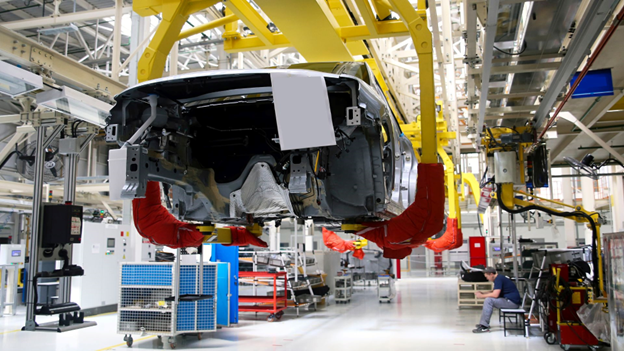
Steel and aluminum are two of the most commonly used materials in automotive manufacturing. Each of these materials has its own unique set of properties and characteristics that make it more suitable for different applications. The decision of whether to use steel or aluminum in a particular application depends on a number of factors, including the desired strength, weight, corrosion resistance, and cost.
Steel is a strong and durable material that has been used in automotive manufacturing for many years. It is particularly well-suited for structural components such as the chassis, body panels, and frames. These parts require high strength and stiffness in order to maintain the structural integrity of the vehicle. Steel also has a high resistance to impact, which is important for safety-critical parts such as the frame and crumple zones. When a car is involved in a collision, the steel frame is designed to absorb the impact and protect the passengers inside.
One of the key advantages of steel is its versatility. It can be used in a wide range of applications, from the smallest brackets and fasteners to the largest structural components. Steel is also readily available and relatively inexpensive, which makes it an attractive choice for manufacturers.
However, there are also some disadvantages to using steel. One of the biggest drawbacks is its weight. Steel is a dense material, which means that it is heavier than other materials such as aluminum. This can have an impact on the overall weight of the vehicle, which can affect fuel efficiency and performance. In addition, steel can be prone to rust and corrosion if not properly treated, which can shorten the lifespan of the vehicle and require expensive repairs.
Aluminum, on the other hand, is a much lighter material than steel. It has a high strength-to-weight ratio, which means that it can provide the same level of strength as steel while weighing significantly less. This makes aluminum an ideal material for components that require less weight and more fuel efficiency, such as wheels, engine blocks, and suspension components.
Another advantage of aluminum is its excellent corrosion resistance. Aluminum naturally forms a thin layer of oxide on its surface, which acts as a protective barrier against rust and corrosion. This makes aluminum an ideal choice for parts that are exposed to the elements, such as body panels and wheels. In addition, aluminum is a highly recyclable material, which makes it an environmentally-friendly choice for manufacturers.
However, there are also some disadvantages to using aluminum. Aluminum is not as versatile as steel and is generally only suitable for certain applications. It is not as strong as steel, which means that it is not well-suited for structural components such as the chassis and frame.
When deciding whether to use steel or aluminum in a particular application, manufacturers must take into account a number of factors, including the desired strength, weight, corrosion resistance, and cost. In some cases, a combination of steel and aluminum may be used in order to achieve the desired properties. For example, some cars have a steel frame with aluminum body panels in order to reduce weight without sacrificing strength.
In conclusion, steel and aluminum are two of the most commonly used materials in automotive manufacturing. Steel is strong and durable, making it well-suited for structural components such as the chassis, body panels, and frames. Aluminum is lightweight and has excellent corrosion resistance, making it ideal for components that require less weight and more fuel efficiency, such as wheels, engine blocks, and suspension components. The decision of whether to use steel or aluminum in a particular application depends on a number of factors, including the desired strength, weight, corrosion resistance, and cost.
